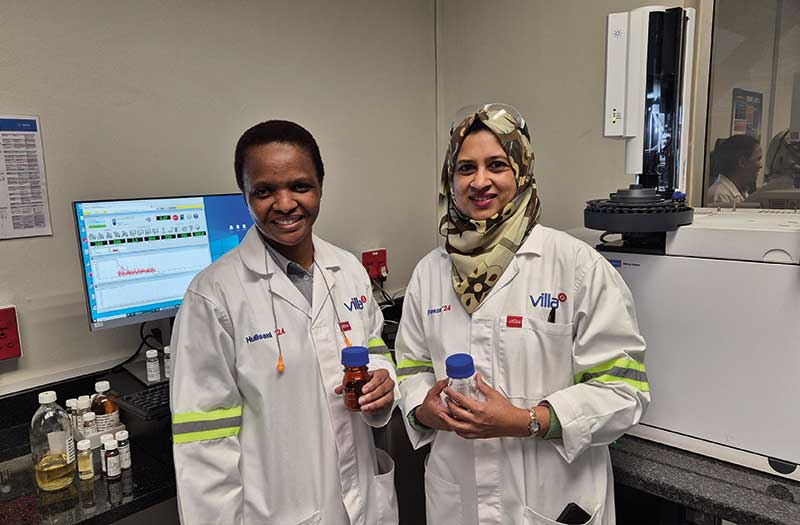Quality control is non-negotiable in the manufacture of crop protection products, and at Fountain Chemicals, this does not stop at simply complying with production standards.
Although the plant is accredited ISO9001, ISO14001 and ISO45001 with a view to ensure the highest possible levels of accuracy in manufacturing processes, two managers at the Olifantsfontein site recently devised a further failsafe in its quality control processes that surpasses ISO requirements.
These efforts by laboratory lead Faeeza Raheman and quality manager Hulisani Mavunga show the value of exhaustive onsite laboratory testing and interdisciplinary collaboration.
Before any product is manufactured at bulk scale, it is first manufactured in the laboratory and then on a small pilot line to ensure correct product composition.
All laboratory batches are stored onsite for two years to enable evaluation in case of quality complaints, or to see if the shelf life of a batch of product can be extended.
Hulisani, a veteran of manufacturing standards, is responsible for ensuring that manufacturing processes comply with the required standards.
One important aspect of product development and batch extension, is the stability testing done at an elevated temperature to mimic how temperature fluctuations will affect the product over its shelf life of two years.
For this test, a small quantity of the batch is placed in a glass bottle with a plastic cap, and placed in a specialised oven for 14 days at 54 degrees Celsius.
During stability testing, it is important to ensure that the bottles seal completely to avoid escape of any solvent affecting the integrity of the product and subsequent results obtained. This is why the lab has changed its approach and recently adopted the use of Schott Duram bottles, the international industry standard for laboratory glass, with lids that completely seal to mitigate such risk.
With this upgrade, they ensured that any changes occurring to the product during the 14 day exposure to heat is due solely to temperature variance.
Another factor that can influence chemicals at the molecular level is ultraviolet light. In order to distinguish product degradation due to temperature and exposure to UV light, they introduced a Schott bottle with an amber tint, which filters ultraviolet light.
A clear bottle and tinted bottle with the same contents are placed in the sun for 14 days and any differences between the two samples after the test will show the effect UV light has on the product. This will be done during product development.
“All of these steps are parts of a quality control (QC) system that we are implementing in order to be able to quantify decomposition much more accurately and in a far more repeatable and reliable manner,” says Dr Johan Huyser, Villa’s RD&I head. He said Faeeza and Hulisani’s changes will become standard procedure at the plant going forward.
“All these innovations form part of our drive to achieve world-class quality control of our batches, so we can perform even better than certain systems,” says Johan.
“ISO accreditation already guarantees that we correctly document everything that goes into a batch as well as all the analyses, that we regularly calibrate our instruments and that our methods of measuring temperature degradation are above reproach.”
The plant is in the process of attaining accreditation in terms of a second accreditation system, Good Laboratory Practices (GLP), to provide additional confidence that any certification or analysis of a product batch is done according to world-class procedures.

